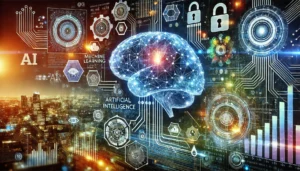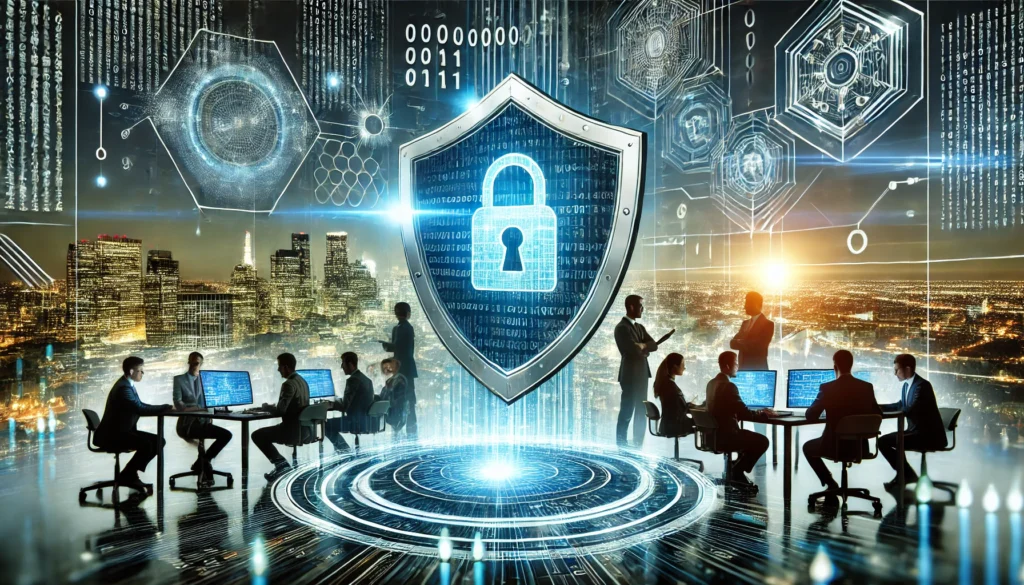Artificial Intelligence defines the all-important field of protecting systems from threats that are continuously emerging in a world of advanced technology. Unfortunately, the recent years have noted tremendous growth in the abilities of hackers, and with advanced methods of hacking even existing security measures being employed, the need for an increased degree of security remains constant. Security automations and timely threat identification are now recognized as necessary weapons in this fight. However, dependencies between the devices and extensive use of algorithms create new risks that have to be mitigated. In an effort to use these systems both to build their future security and to fend off cyber criminals attempting to steal more identity data, it is critical that these systems are reinforced.
The Role of Artificial Intelligence in Strengthening and Challenging Cybersecurity
Artificial intelligence is bridging nicely with cybersecurity and how organizations protect theirselves from cyber threats. Applicable in monitoring of cybersecurity threats, artificial intelligence assists in identification of existing loopholes and response to threats in real time. An example of AI usage is in machine learning which allows AI systems to pattern giant sets and look for new threats. But, at the same time, it offers challenges for AI to enhance defense mechanisms, which is not a simple process and has certain constant changes.
Of course, like every noble purpose, AI poses considerable challenges. Criminals are also better integrating AI into hacker activities so they can automate and begin more complex heists. These models are known to be vulnerable manipulation; this makes it easy for a security system to be cheated. Such a two-sided involvement of AI in the context of cybersecurity speaks for the necessity for constant development of protection methods, which ensures that AI tools, the purpose of which is to protect systems, do not create additional threats.
Enhancing Cybersecurity for Artificial Intelligence: Securing Algorithms and Real-Time Threat Detection
AI algorithm protection is important in increasing cybersecurity of artificial intelligence systems. In such algorithms, there may be issues relating to compromisable data, hence insecurity. People who work in cybersecurity help to protect the privacy of data, so that information that is personally identifiable cannot be accessed. AI can help to enhance the levels of threat intelligence and enable automation of both detection and response in cases when systems can recognize threats faster while preserving the data’s purity.
AI threat detection promise is the ability to use machine learning to scan systems and react to security breaches in real-time. Since all these are automated by AI, it affords quicker identification and managing or risks that could arise. Still, cybersecurity professionals have to bear in mind the ability of AI models to be manipulated. Another reason is that detection and response must be an ongoing process since new threats become more and more complex.
Enhancing Cybersecurity for AI Systems: Addressing Bias, Automation, and IoT Security
The establishment of reliable AI systems has to be the way forward when improving cybersecurity for artificial intelligence. Reducing bias in the AI technology is important in order to derive a fair and accurate inferential output for an incident. Risk emerges where biases affect choice and decision making thus increasing an organization’s vulnerabilities. Through addressing these problems, new AI can engage more actively in constructing present-day cybersecurity, lowering the probabilities of cyber threats and enhancing stability of artificial safety systems.
Automated security system powered by artificial intelligence is beneficial some ways while posing some limitations as well. Although automation optimizes response rate to cyber attacks, it also comes with its disadvantages if not well controlled. This is especially important for smart devices that are developed in the context of AI IoT technology, where security metrics are lower. Enhancing cybersecurity for these devices keeps them safe so that connected networks can never be exploited while also improving the incident response.
Mitigating Adversarial Threats and Shaping the Future of Cybersecurity with AI
A form of attacks, which takes advantage of flaws in machine learning algorithms, is adversarial attacks whereby the attackers manage to input the system with information that the system cannot resist. Challenges associated with cybersecurity for artificial intelligence refer to these threats and can be overcome by educating AI models to experience and learn from data. Another closely related practice is the ethical hacking, which enables security specialists to determine sequences of illegitimate actions and improve protective measures before criminals use these sequences.
Looking ahead, more trends of cybersecurity will be marked by AI systems as the prime feature that defines and shapes the trends. AI can process large volumes of data, detect threats and send alerts in real time as well. Discussed as follows, these systems will only continue to advance and subsequently improve the cybersecurity of AI making it more flexible to the developing threats and constantly learning and developing itself.


